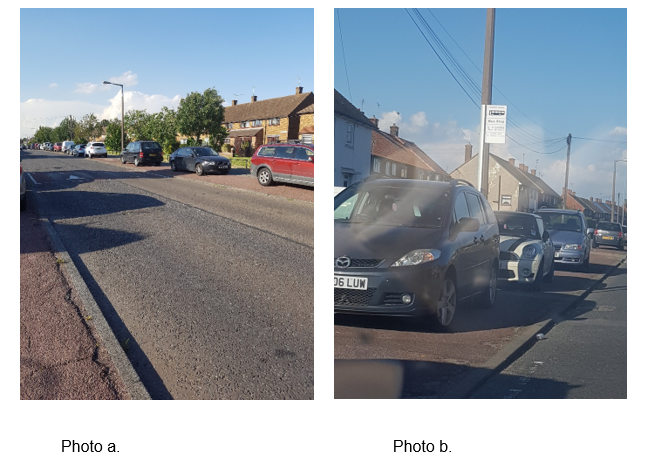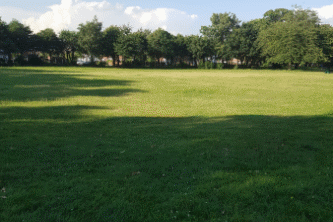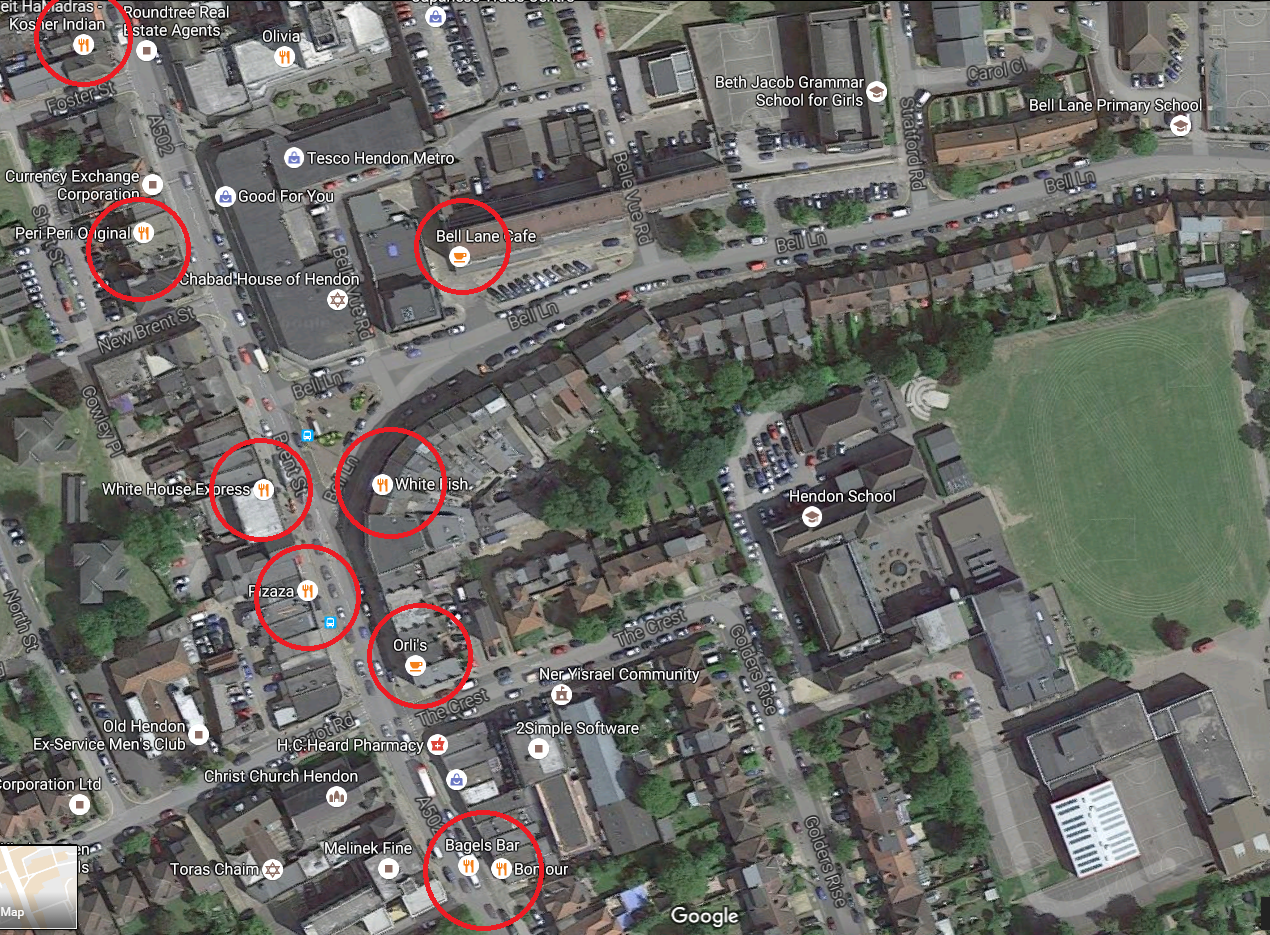Introduction
Despite the recent efforts to reduce childhood obesity, it persists as a well-recognized problem in the United Kingdom, highlighting the need to study factors that contribute to childhood obesity. Most recent data suggests that a third of all children in the UK are classified as obese or overweight (Fat 2014, p. 4). Childhood obesity is generally associated with a variety of health complications including coronary heart disease, musculoskeletal disorders, and depression, which can lead to future disability and lower quality of life.
Research shows that there is a correlation between the quality of the urban environment and the likelihood of childhood obesity, suggesting that certain features of the urban environment act as barriers to physical activity and promote weight-related problems (Kim, Lee & Sohn 2016, p. 121). The objective of this paper is to examine childhood obesity as an urban health issue and support this view by examining those features of the urban environment which promote childhood obesity by acting as barriers to physical activity.
The neighborhood chosen for this project is the Hendon suburb located in the London Borough of Barnet. This urban health profile includes the brief overlook of the London Borough of Barnet and the Hendon suburb, its population and demography information. In addition, the rationale of the work is presented and supported by the literature review. The observation part includes the presentation and analysis of findings related to the urban environment of the Hendon suburb in the London Borough of Barnet in the context of childhood obesity, informed by academic literature review. The last section includes recommendations on the ways the urban environment of Hendon can be improved to promote healthy eating habits and encourage physical activity.
Background and Rationale of the Work
Urbanization is the term that describes the movement of people from rural areas to towns and cities. In the last several decades, more and more people moved from rural areas into cities in search of better job opportunities, better education, better healthcare services, and entertainment. Today, towns and cities are predominant, the majority of the Europeans live in towns and cities. An urban environment describes features or characteristics which are specific to urban areas and affect the well-being of people living in those urban areas.
Dense urban environments provide many opportunities, and positive aspects of urban environments are the focus of the ‘urban health advantage’ approach to health studies. However these advantages come at a cost: unlike natural environments, urban environments rely on artificial infrastructure which can either promote or hinder people’s physical activity. This is the focus of another approach called the “urban health penalty’. There is a growing body of research which suggests that our surroundings affect our lifestyle and well-being.
Urban and transport planning, as well as access to healthy foods, can either promote obesity or act as a solution to it. Well-designed urban settings that offer walking trails, green spaces, bicycle lanes, and accessible pavements reduce obesity by promoting physical activity and are generally associated with better health (Mitchell & Popham 2007 p. 681). One study found out that the existence of a walking trail near children’s homes reduces children’s weight (Sany, Tchernis, Wilson, Liu & Zhou 2012, p. 1).
On the other hand, poorly designed urban environments that lack green spaces or walking trails, have inaccessible pavements and no bicycle trails hinder physical activity and result in a higher probability of obese children and adults. These facts make childhood obesity one of the urban health issues, or an issue which is at least partially shaped by the characteristics of the urban environment (Galea, Ompad & Vlahov n.d., p. 2).
The London Borough of Barnet is one of the 33 districts of the London region located in North London. It is one of the largest London districts with the latest population estimate of 356,400 residents (Insight Update – 2011 Census Outputs 2012, p. 1). Hendon is one of the suburbs of Barnet. The population of Hendon ward is estimated at 18,472 (Insight Update – 2011 Census Outputs 2012, p. 5). The area is continuously growing due to the increasing number of young people, and the population of 0 to 19-year-olds “grew by more than 20% since the last census” (Insight Update – 2011 Census Outputs 2012, p. 2).
In terms of health, the situation is similar to the rest of London, and there is room for improvement. Children obesity statistics in Barnet are similar to the rest of London, the number of obese or overweight children in reception is 21%, and 34.4% for children in year 6 (Njolinjo 2015 par. 4). Roughly one-fifth of the adult population reported their health as fair, bad, or very bad (Insight Update – 2011 Census Outputs Second release 2012, p. 3).
Every sixth resident of Barnet suffers from a long-term health condition that affects their physical activity (Insight Update – 2011 Census Outputs Second release 2012, p. 3). It was already mentioned that childhood obesity leads to a variety of health complications in adults, including disability, and Barnet has a large population of children and adolescents who are currently obese or overweight. Therefore, in order to improve the health of the Barnet population is it is vital to evaluate the quality of urban planning to examine its effects on the physical activity of children and consider changes to urban planning as a preventive measure to combat obesity. The observation described in the following section of the paper shows that there is some room for improvement in Hendon ward.
The Observation Data and Analysis
The survey of Hendon was conducted in the following phases:
The Research Phase
The researcher reviewed current academic literature on childhood obesity as an urban health issue, paying close attention to those environmental factors, which have been negatively associated with increased weight among children. These include, but are not limited to:
- parks and open spaces to play (Kim, Lee & Sohn 2016, p. 8);
- longer three areas (Kim, Lee & Sohn 2016, p. 8);
- walking trails (Mitchell & Popham 2007 p. 681);
- pavement availability (Sallis & Glanz 2009, p. 128) and others.
The Observation Phase
The survey of Hendon suburb was performed on Wednesday 20th July 2016. The researcher observed pavements, green spaces, walking trails, bicycle lanes, fast food restaurants, and children’s behavior in the area. Photographic evidence was taken and is presented below.
Photo a. shows that the majority of cars are parked on pavements. The inaccessibility of pavements significantly reduces the chances that children will feel inclined to use them for walking and recreation (Sallis & Glanz 2009, p. 128). Photo b. is another example of inaccessible pavements. There are no dedicated bicycle lanes in the area. Together with inaccessible pavements, this results in more children riding a bus rather than riding a bicycle to school.
Photo c. shows one of the many corner shops and fast-food restaurants functioning in the area near the school. In addition, there are a number of fast-food restaurants on the busiest street, Hendon central, including Subway and KFC. Fast food shops and restaurants use flashy advertisements like the one on photo c. to attract schoolchildren. It was observed that the corner shops and fast-food restaurants were full of school children between 3-4 pm. Photo d. is a screenshot of the area from Google Maps, which highlights the number of fast-food stores in red. Processed food, sold at these stores, is one of the major contributors to childhood obesity. A number of studies have shown a correlation between increased weight and the consumption of fast food (Abdullah, Mokhtar, Bakar & Al-Kubaisy 2014, p. 505).
Although there are a number of parks and green areas in the Hendon suburb, they were largely empty at 4 pm (photos e. and f.). It is likely that children spent this time in fast food stores, and likely spend the rest of the day at home. It should be noted that parks lack swings, playground equipment, or sports equipment, and are generally empty of anything but trees. This might be another reason why they are empty. A lack of physical activity is an important factor when it comes to childhood obesity, and parks and other recreational areas should offer equipment to promote play and physical activity.
However, during the observation, the researcher saw several walking trails in the Hendon area, so it is likely that in the context of childhood obesity, the combination of other environmental factors is more influential than the existence of walking trails.




Recommendations and Conclusions
The observation suggests that several environmental aspects of the Hendon suburb contribute to the obesity problem in the area. The observation aligns in part with an approach called ‘urban health penalty’, which assumes that the urban environment contributes to the low levels of mental and physical health of the urban population. There is no denying, however, that cities offer a number of advantages, in fact, some health indicators are better in cities due to the availability of medical services.
As was already mentioned, the urban environment can have a different effect on people’s health. Certain features of the urban environment act as barriers to physical activity and promote obesity. At the same time, if the effect of these features is reverted, the urban environment will not affect obesity statistics in a negative way, it might, indeed, improve the current situation with childhood obesity. In order to achieve this, the local government has to ban parking on pavements and dedicated special parking spaces.
This will make existing pavements accessible, promote walking and bicycling, increase physical activity, and decrease the number of obese children. Design-code should be implemented to forbid flashy advertising of fast food in order to limit unhealthy eating habits. Special programs should be established to promote physical activity among children, such as area-wide competitions and festivals in the local parks. Parks should offer equipment such as swings and horizontal bars to promote play and physical activity. If implemented, these changes should improve current obesity statistics and health of the population in general.
References
Fat, L 2014, Children’s body mass index, overweight and obesity. Web.
Galea, S., Ompad, D. & Vlahov, D. n.d., Urban Health Issues. Web.
Insight Update – 2011 Census Outputs. 2012. Web.
Insight Update – 2011 Census Outputs Second release. 2012. Web.
Mitchell R & Popham F 2007, ‘Greenspace, urbanity, and health: relationships in England’, Journal of Epidemiology & Community Health, vol. 61, no. 1, pp. 681-683.
Njolinjo, D 2015, Children’s Health Programme extended in Barnet. Web.
Sallis, J, & Glanz, K 2009, ‘Physical Activity and Food Environments: Solutions to the Obesity Epidemic’, The Milbank Quarterly, vol. 87, no. 1, pp. 123-154.
Sandy, R, Tchernis, R, Wilson, J, Liu, G, & Zhou, X 2012, ‘Effects of the built environment on childhood obesity: The case of urban recreational trails and crime’, Economics & Human Biology, vol. 1, issue 1, pp. 18-29. Web.
